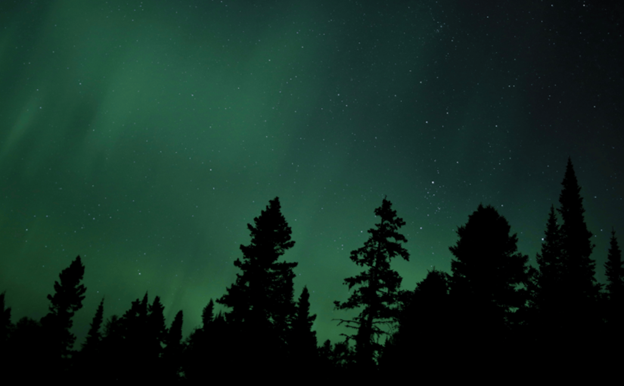Today’s post comes from David LeGros, park naturalist at Algonquin Provincial Park.
Even though our parks are currently closed, I’ve noticed people are continuing to submit observations to iNaturalist.
At first, I was a little worried that people were entering parks during the closure, but on closer inspection, I was pleasantly surprised.
A natural fit
Nature people and park people are a special bunch. It’s unusual for people to willingly subject themselves to the rigours of nature. Long portages, bug bites, thunderstorms, sleeping on the ground, and more all await the nature enthusiast camper.
Despite these challenges, people still go on these adventures because the rewards are far greater than the discomfort. Anything worth doing usually isn’t easy!
Among the many rewards of camping and adventuring is what you will see: encounters with wildlife, special moments with loved ones, or peaceful and powerful scenery.
Maybe you took a few photos while you were out there…
Observe and report
If you’re like me, you have a ton of digital photos from past adventures, and you may not know what to do with them.
Many people are now going through their old digital photos (and even scanning old film photos) to add them to iNaturalist!
In recent years, several online platforms have emerged as ways to log your observations. Among them, iNaturalist is the most popular. It’s easy to use and really fun!
You can submit observations in real time, and a community of users confirms your sightings.
It all adds up to a bigger picture of biodiversity on Earth, and specifically in our parks.
If you know the date and location, and you have a photo depicting an organism, it can be an iNaturalist record. In fact, almost 6,500 of the over 193,000 observations in the Ontario Parks iNaturalist project predate April 27, 2000!

Our park users are really devoted to our landscape. It makes us proud to serve our visitors and help protect the landscapes we all love. Even though we can’t be in parks right now, we can still contribute to documenting biodiversity in them.
Backyard biodiversity
Reminiscing about an awesome trip and observations is great, but what about making new ones? Well, right now you can contribute tons of records about what lives close to home.

We often think about protected areas as islands of biodiversity, but our whole province is important. We are challenging you to go out there and discover what lives around you.
Here are a few tips:
Set your expectations.
You’re unlikely to see wolves and bears, but you can easily find Wolf Spiders and Woolly Bear Caterpillars. Delight in the small things.
Move slowly and get close.
Many of the organisms you will encounter are small and slow-moving. Kids are really good at finding them, too!

Get creative in your searches.
Try going out on the lawn at night with a flash light or looking around a porch light. There is a night shift of creatures that we normally don’t see.

The mundane transformed.
Sometimes when you see the same things every day they just become part of the background. Even weeds that grow at the edge of your yard or in cracks in the sidewalk become much more interesting once you know their identity. Get to know them!
Try it out!
You don’t need much to get started.
A smartphone with the iNaturalist app goes a long way. If you’re a real keener, a jar and magnifying glass help too!
A curious mind is perhaps the most important equipment. iNaturalist uses a mix of artificial intelligence and other users to identify your submissions, and it will even keep track of your “life list,” which is how many observations and species you have recorded.

Like I said, nature people and park people are a special bunch, and we all miss our special places.
Let’s all use our time away to help protect them.




